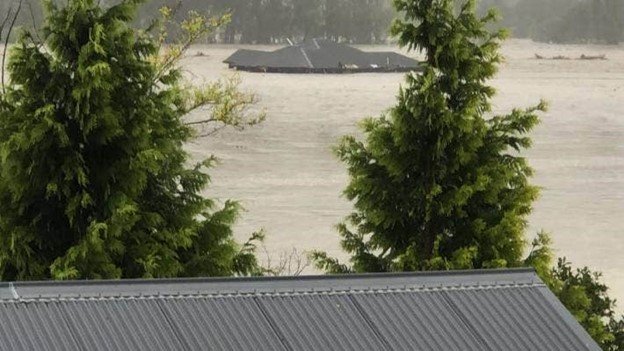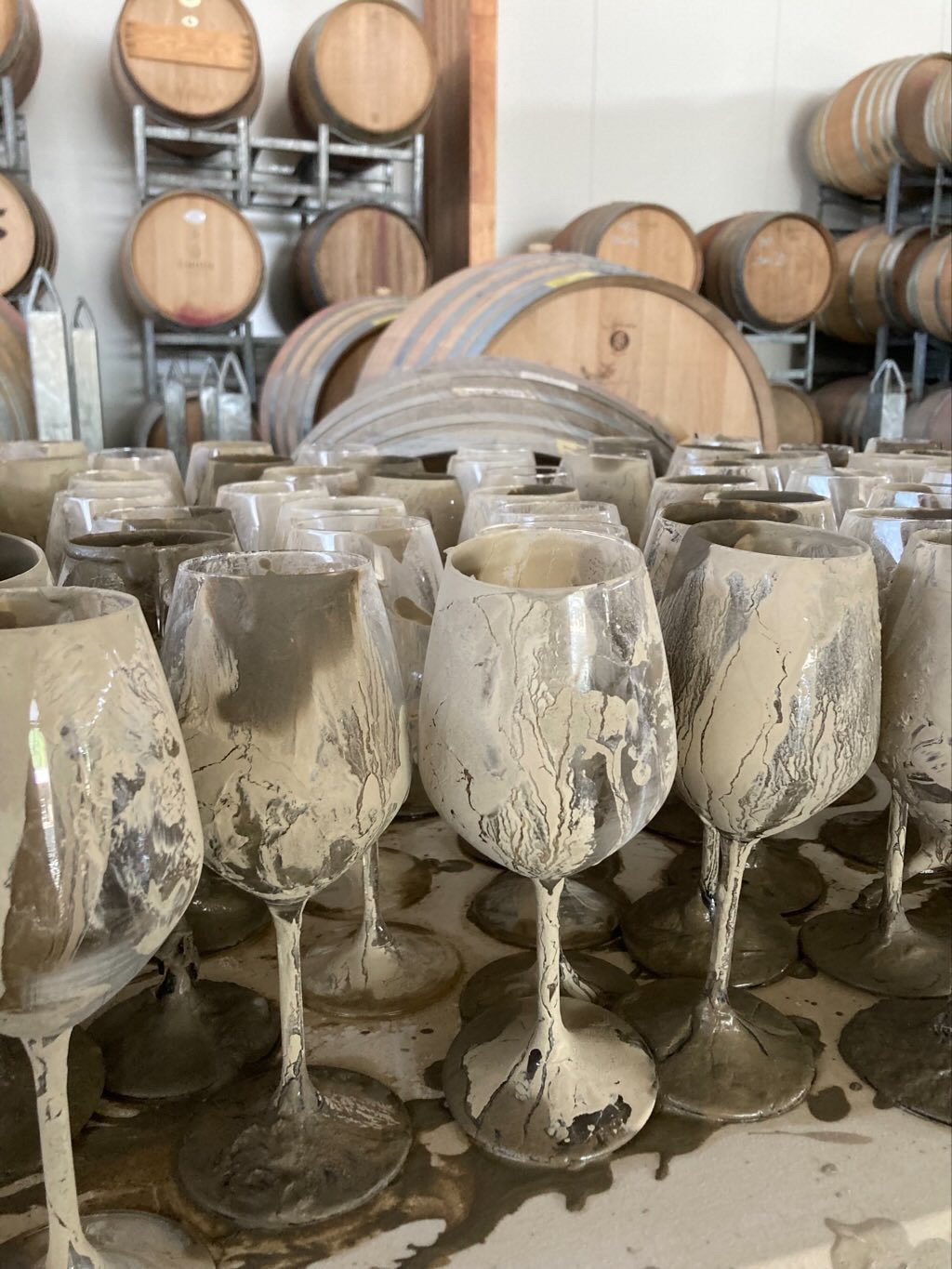Massive Clean Up in Hawkes Bay Continues
My wife and I were in Hawkes Bay just a few days before Gabrielle stopped by and unleashed her destructive power. I was there to taste and select the annual Hawkes Bay Chardonnay Collection https://nzwinedirectory.co.nz/hawkes-bay-chardonnay-collection-2021-results? . Vines on the most part were looking rather good, there was excitement about getting the harvest underway, apples and other crops were primed for picking. Gabrielle decided differently, ruined businesses, took away the livelihood of many and the souls of people and animals, there are still some unaccounted for. The wine sector did not escape damage, friends at Linden Estate and Pentane wines, Saorsa Wines, Hancock and Sons and Radburnd Cellars all suffered damage, some severe. A targeted online fund raising program has so far topped 4 million dollars - this is amazing and is in addition to the immediate assistance from the government and Navy - thank you to all those who have stepped up. After reading the piece below written by Oliver Styles on February 20th, you would like to send a donation directly to the Hawkes Bay Winegrowers Association - details are at the end of Olly’s article.
A link to his original piece is also located at the end.
If you would like to chat directly with me or someone connected to the clean-up before making a donation then please reach out - cameron@camdouglasdms.com
Please don’t forget that Northland and Gisborne have been severely affected too, and if you would like to reach out to their fund raising teams then visit : https://www.gdc.govt.nz/council/news/if-you-want-to-help-heres-where-to-donate AND https://www.redcross.org.nz/support-us/our-current-appeals/new-zealand-disaster-fund/
If you are keen to send some money targeting the wine producers directly - see details below managed by the Hawke’s Bay Winegrowers Charitable Trust
C.
_____________________________________________________________________________________________
Hawke's Bay Cleanup Begins
Written by Oliver Styles·Monday, 20-Feb-2023
The field itself is a mirror in brown; tufts of root vegetables, or something that looks like the tufts of root vegetables dot intermittent parallel lines along the brown glass.The silt on the roads is turning to dust where the car wheels are tracking and loose apples, picked up and deposited by the waters, covered in dry mud and resembling dusty balls, cluster and pool in groups of varying quantity at the roadside. Apples, squash and indeterminate vegetables look like rounded rocks after a river has been drained. They run along the roadsides like a Braille carpet.
Where the fences are still standing (the rest look like they have been pushed over by a mob of tractors), they look like scrim nets – the nets the army put up to camouflage bases and positions – draped, vertically, between posts. The fencewires have caught the hay, grass and debris washed along with the river; some are so thick they look like matting suspended vertically.
I drive through a settlement and there are caravans, upside down, in the trees of apple orchards. Silage bails lie, higgledy-piggeldy, in the ditch. RSE workers (the guys – it's predominantly guys in Hawke's Bay – from the Pacific Islands who come to harvest grapes and apples) are maneuvering an empty 1000-liter plastic cube tank in a driveway. One house looks as if it has vomited thick mud, the color of dark chocolate, down the front door steps. Each house has had a shape and code spray-painted on it by the disaster relief teams, showing the date it was declared clear and other hieroglyphs undecipherable to the untrained eye. A huge tree, its upper branches visible from the car, is wedged against a pillar in the middle of the bridge across the Tutaekuri river.
Nothing, though, quite prepares you for the devastation in the Esk Valley. Here, the silt washed across the valley by the Esk river is measured not in centimeters, but meters. There are orchards where the silt is above or level with the top of the fenceposts supporting the fruit trees. In some cases, it is impossible to tell just what type of fruit was being grown in a particular orchard.
The railway tracks have been disassociated from the ballast and swept to the side. They hang, draped between solid objects, above pools of water that look like half-filled craters. In one section the track has split and the force of the water has twisted the rails into a hairpin. That's when I gasped. A railway line, bent back onto itself like a hairpin.
The road (here, it's State Highway 5) appears to lie under shifting sands – as if, like some ancient byway, it had to be uncovered by archeologists. In parts, it is almost washed away; in others, the water has undermined the tarmac and it is cracking as if a giant has been snapping off bits of asphalt to snack on.Dust to dust
A tractor has been washed across a paddock and lies, on its side, by the fence in a mess – its chevron-patterned rubber tires the only real indication as to what it is. A quad-bike is upside down, three-quarters buried in silt in the ditch. The force of the flood has rent car doors backwards, punched into bonnets, smashed windscreens and forced vehicles to back up onto piled-up silt. A pair of windscreen wipers hang limp, like two emaciated broken legs.
Three animal corpses – one is either a sheep or a goat – their fur the same color as the road and the fields, are in a macabre pile on the hard shoulder. The hard shoulder itself has been cut out of the mud in places and resembles a brown snowdrift.
The mud (or should I call it silt?) is everywhere. In the cellar where we go to help, it resembles oobleck: solid under pressure, liquid at rest. It's so fine it feels like prizing bottles of wine from soft clay; like trying to pull a bottle out of the sand at low tide.
They have to chainsaw and angle-grind their way in through the walls to get into the building – the mud is so high outside and in. The emergency services have tagged the presence of two gas cylinders, their tops only just dug out of the mud, on the outside wall. Inside, you climb silt then wade through watery mud, the mud filling your boots as you move between pallets of bottles. The cardboard is saturated and comes away in your hand, revealing bottles of wine plastered with more cardboard dividers; you feel blindly into the murk and drag them out, bottle by bottle. The bottles slip in your hands, greased with silt. In there, it is just the sound of sloshing and the labored breathing of your neighbor, the chink of glass, shouts, grunts and the odd joke – a smile, laughter.
By now mud is everywhere, covering arms, legs and clothes, wiped across foreheads and planted by hands on walls as people try not to lose their balance in the shin-deep quagmire. The only place you can wipe your mouth is the inside collar of your T-shirt. You don't want to ingest it and you don't want cuts – the microbial underworld has joined us.
Outside in the sun, the mud dries on limbs, caking and cracking on them, and pulling the skin when you squat, move or stretch. You rub it off and it turns to fine dust. It's the same fine dust produced by the top layer of silt in the fields all around. It's picked up by the wind and you breathe it in. It feels grainy between your teeth for the rest of the day.
The earth has come back to us.
But if there is one thing we are more than capable of as a species, it is changing our own environment. This can be for better or for worse. We can plant vines where there were no vines; we can be helpless before nature's wrath and return to the land to reshape it again; we can build barriers (both physical and legal) to prevent or mitigate nature's wrath when it appears again.
We can lend a hand, physical, financial, moral to our neighbors and friends. We can rebuild. We can begin to think about the future. And we can begin to mend each other's broken hearts.
________________________________________________________________________________________
To donate
For New Zealand donations please use the bank account as follows:
Name: Hawke’s Bay Winegrowers Charitable Trust
Number: 02-0700-0005785-025
Reference: Please use code HBWGRF and your name and cell phone number
If you require a donation receipt, please email info@hawkesbaywine.co.nz
For residents outside of New Zealand, please use name and reference as above but the following account number:
BSB: 02-0700
Account number: 0005785-025
SWIFT code: BKNZNZ22
Original copy of the article above:
https://www.wine-searcher.com/m/2023/02/hawkes-bay-cleanup-begins



